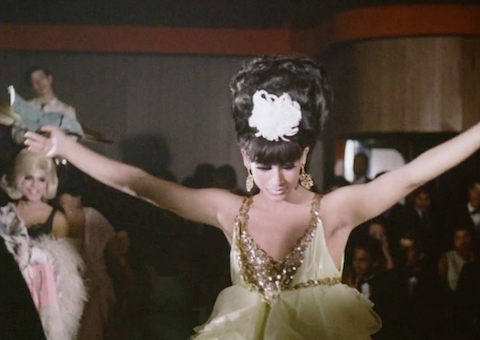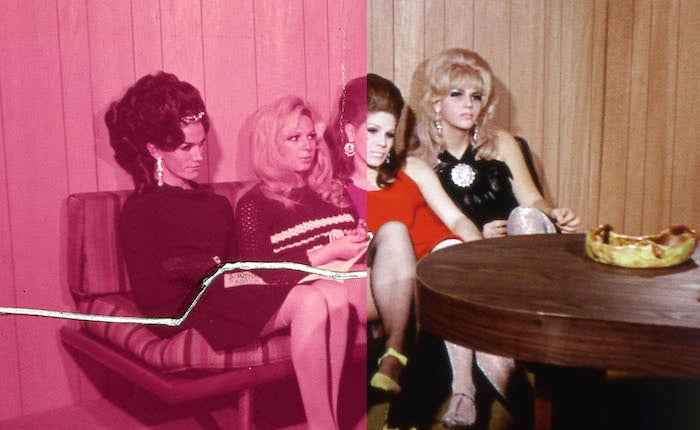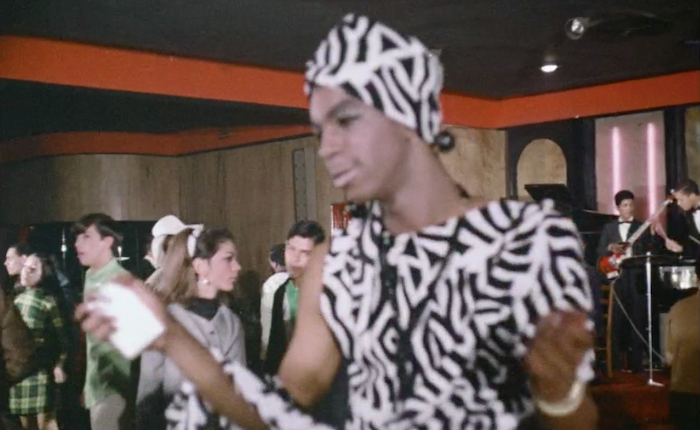
Queens at Heart
Our guest writer, LGBTQ film historian and archivist Jenni Olson, discusses the significance of Queens at Heart (1967), a rare look at the lives of four trans women and drag ball culture in mid-1960s New York. Thanks to her discovery of this long-obscure film, Queens at Heart was restored by the UCLA Film & Television Archive in 2009 as part of the Outfest UCLA Legacy Project. The project is an ongoing effort to preserve and showcase LGBTQ moving image media and is the largest publicly accessible collection of its kind.
Having the UCLA Film & Television Archive make Queens at Heart available for viewing via their YouTube channel is like a dream come true for me. I want everyone to see this film.
I first purchased the rare 35mm print of Queens at Heart in the mid-1990s based only on an instinct that the title sounded promising. I figured it was going to be somehow related to drag or trans culture or else it would be some kind of kitschy beauty pageant. Either way, it seemed worth risking the $75 being charged by a fellow film collector who was selling it through the pre-eBay monthly film collector’s newspaper, The Big Reel.
The print sat in a box next to my desk for nearly two years before I finally got to see it. It was on 35mm, a format I was only able to view when I could convince one of the projectionists at San Francisco’s Roxie Theater to stay after hours to show it to me. The experience of discovering such an incredible piece of queer history is one of the proudest achievements of my career as a film historian and archivist.

Before and after the digital restoration, which corrected the color fading and damage on the film.
In addition to being an amazing portrait of four pre-Stonewall trans women, Queens at Heart is also fascinating as an example of a genre we might call "exploitation documentary”—it sensationalizes its subject while maintaining a pretense of being to some degree educational. It was released as a short subject in conjunction with the 1967 exploitation film, She-Man.
Queens at Heart was a film that had been essentially lost to us—with nothing written about it in LGBTQ film literature. I've unearthed many rare films over the years but Queens at Heart is the most significant on every level. As a glimpse at pre-Stonewall queer life, it is truly remarkable. I especially love that it features rare footage of a drag ball, and includes the joyful depiction of gay men—gay men of color—dancing together.
Most compelling though are the interviews. Misty, Vicky, Sonja and Simone are four courageous trans women who candidly discuss their personal lives with a lurid, straight cis male interviewer who claims to have spoken to “thousands of homosexuals” (and who clearly doesn’t understand the difference between sexual orientation and gender identity).
While the interviewer’s creepy, inappropriate questioning is often hard to stomach, the women successfully transcend his tone and come across with an incredible sense of dignity and candor. They talk about their double-lives: going out as women at night but living as men during the day, and about how they take hormones and dream of “going for a change.” One talks about avoiding the draft, another about her fiancé, and another about the torment of childhood as an effeminate youth. Their honesty and vulnerability are truly a gift.

Having presented it to queer film festival audiences and LGBTQ film history students over the years, I’ve probably watched Queens at Heart at least 100 times. Every time it ends, I want to start at the beginning and watch it all over again. These women are simply amazing. They are courageous, thoughtful, smart, funny, beautiful—heroes.
There are very few filmed images by or about LGBTQ people before the Stonewall uprising of 1969, the event that is generally considered to be the start of the modern LGBTQ rights movement. There were especially few portrayals of trans lives and experience in this era (one particularly notable example, also from 1967, is Behind Every Good Man, which has thankfully also been preserved by UCLA). It is so important and valuable for us to rediscover and reclaim LGBTQ representations from earlier film history. While parts of the film seem to reflect ignorance and transphobia, Queens at Heart actually concludes with a sympathetic viewpoint that gestures toward what I think is at least a partially progressive agenda underneath its lurid surface.
The film’s final message is: “Who are we to judge?” Ultimately, this unique cinematic rarity offers a vivid impression of what it was like to be trans at a very different time in history. The mixture of luridness and sympathy also makes it an endlessly fascinating film to study. Watch it with someone you love. Enjoy and discuss and celebrate our heritage, our heroes and our history.
Happy Pride!
Watch Queens at Heart on YouTube:
About Jenni Olson
LGBTQ film historian and archivist Jenni Olson is a founding advisory board member of the Outfest UCLA Legacy Project. Her work as a film historian includes the Lambda Award nominated The Queer Movie Poster Book (Chronicle Books, 2005). Her work as an experimental filmmaker and her expansive collection of LGBTQ film prints and memorabilia was acquired by the Harvard Film Archive in 2020; and her reflection on the last 30 years of LGBTQ film history, in The Oxford Handbook of Queer Cinema, is forthcoming from Oxford University Press in 2021. An acclaimed writer-director, Olson is now in development on her third feature-length essay film, The Quiet World, and an essayistic memoir of the same name.
—edited by Jennifer Rhee, Digital Content Manager
< Back to the Archive Blog






 Mobile Navigation
Mobile Navigation

